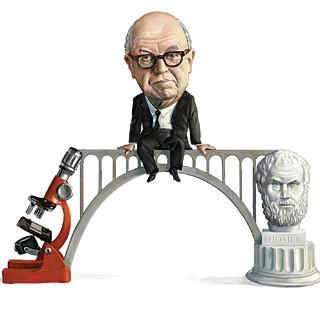Week 1: Two Cultures
Week 1: Two Cultures
This week’s material regarding the concept of Two Cultures is a very new idea to me, something I had never really thought about before. Yet, after reading about the conception of this idea and the reality of the divisions and connections between these two worlds, it becomes very visible in my life and education.


This week’s material regarding the concept of Two Cultures is a very new idea to me, something I had never really thought about before. Yet, after reading about the conception of this idea and the reality of the divisions and connections between these two worlds, it becomes very visible in my life and education.
Snow’s revolutionary writing pointed to the polarization of academia through the divide between
science and art, in which two distinct cultures have diverged in seemingly opposite directions.
Snow describes the reason for this gap in “The two cultures and scientific revolution”, stating
“between the two a gulf of mutual incomprehension- sometimes hostility and dislike, but most
of all a lack of understanding”(4). It becomes clear that the worlds of scientific discovery and the
literary arts are not intrinsically different, they are misunderstood in relation to each other.
science and art, in which two distinct cultures have diverged in seemingly opposite directions.
Snow describes the reason for this gap in “The two cultures and scientific revolution”, stating
“between the two a gulf of mutual incomprehension- sometimes hostility and dislike, but most
of all a lack of understanding”(4). It becomes clear that the worlds of scientific discovery and the
literary arts are not intrinsically different, they are misunderstood in relation to each other.
The gap between science in art is shown to be bridged by CP Snow’s revolutionary ideas.
In my own education, I have seen these fields interact. As a Human Biology and Society major,
my courses include overlap between the humanities and physical science. Many topics, for example,
issues of public health, are influenced both by biology and social movements rooted in intellectual
theory.
my courses include overlap between the humanities and physical science. Many topics, for example,
issues of public health, are influenced both by biology and social movements rooted in intellectual
theory.
Illustration depicting the area of possibility when science and art collide
The gap between the two cultures is to be bridged by the exciting field of technology. Victoria Vesna
illustrates this in "Toward a Third Culture: Being In Between" in her proposal that, “Negotiating the gap
between the canon of rationality and the fluid poetic is ultimately the goal of artists who work with
communication technologies”(122). The development of a third culture is to be discovered by those
who marry science and art, described by Brockman in an interview where he answers that these
cultures, “meet as artists, acting as sensing and monitoring devices for a society”. I strive to be one
of these artists who connects the two cultures through public work utilizing both fields during my
academic career at UCLA.
illustrates this in "Toward a Third Culture: Being In Between" in her proposal that, “Negotiating the gap
between the canon of rationality and the fluid poetic is ultimately the goal of artists who work with
communication technologies”(122). The development of a third culture is to be discovered by those
who marry science and art, described by Brockman in an interview where he answers that these
cultures, “meet as artists, acting as sensing and monitoring devices for a society”. I strive to be one
of these artists who connects the two cultures through public work utilizing both fields during my
academic career at UCLA.
A picture of me when I first moved into college, unaware of all the knowledge I would be exposed
to at UCLA.
to at UCLA.
Sources
Snow, C. P. “Two Cultures and the Scientific Revolution.” Reading. 1959. New York: Cambridge UP,
1961. Print.
1961. Print.
Vesna, Victoria. "Toward a Third Culture: Being In Between." Leonardo. 34 (2001): 121-125. Print.
Brockman, John. The Third Culture. N.p.: n.p., 1995. Print.
Snow, C.P. The Two Cultures: And a Second Look. N.p.: n.p., 1963. Print.
Krauss, Lawrence M. “An Update on C. P. Snow's ‘Two Cultures.’” Scientific American, 1 Sept.
2009, www.scientificamerican.com/article/an-update-on-cp-snows-two-cultures/.
2009, www.scientificamerican.com/article/an-update-on-cp-snows-two-cultures/.
I found it very interesting that your major has combined both humanities and biology. It made me realize that this third culture is already so prevalent in our society, and we are moving closer toward more of it in our future. I enjoy that you see the importance of the unity between these two fields, and have made it your goal to connect the two cultures.
ReplyDelete